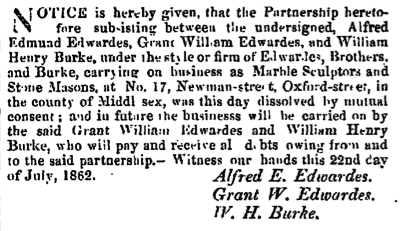” Gerald Neilan was the first British officer to die in the Rising; his brother was a rebel.” – Irish Times. The shot that killed him was fired from the Mendicity Institute on the banks of the River Liffey.

I came across three extraordinary articles recently. Two from the Irish Times, and one from the Irish Mirror, they were all written about two years ago, on the centenary of the Easter Rising, and I’m not going to quote them entirely. You can read them here – Irish Mirror – 26 Mar 2016, Irish Times – Mon, Mar 28, 2016, – Irish Times – Sun, Apr 24, 2016,
I’ll let the Irish Times tell the next part of the story.
” In Glasnevin Cemetery there is a faded headstone over the Neilan family plot. Husband and wife John and Eva Neilan are buried there. They came originally from outside Roscommon town. After her husband died, Eva Neilan moved to Dublin. She died in 1930, outliving the first of her children listed on the headstone Lieutenant Gerald Neilan R.D.F (Royal Dublin Fusiliers).”
” His date of death is instructive as to when and why he died — “killed in Dublin, Easter Monday 1916, aged 34”. Neilan was the first British officer to die in the Easter Rising. He was an Irishman so “strongly nationalistic in his sympathies as to be almost a Sinn Féiner”, according to the author Stephen Gwynn. He was one of four Neilan brothers who served in the army during the first World War, three of them as doctors in the Royal Army Medical Corps (RAMC)……. One Neilan brother though took a different path. Arthur Neilan was sworn into the Irish Republican Brotherhood (IRB) in 1913 and joined the Irish Volunteers shortly afterwards. He was only 18. On Easter Monday, Arthur Neilan was told by Patrick Pearse to proceed to the Four Courts garrison which needed reinforcements and found himself fighting in the same garrison that had killed his brother earlier that day. ” – Irish Times
All the stories reflect quite strongly on the tragic irony of Arthur Neilan serving along side the men who killed his brother, and the story of Irishmen fighting Irishmen on the streets of Dublin. What they don’t do is look in greater depth at what and who these men were, and I suspect the real story is a great deal more complicated than it looks at first sight.
The second Irish Times article, and the Irish Mirror article both quote a niece of both men, and the overall tone of the articles creates a very different picture from what is actually the case. As is often the way, the family folklore takes on a life of its own, and doesn’t appear to quite tell the real story. The first real clues to look at are the sentence ” He (Gerald) was an Irishman so “strongly nationalistic in his sympathies as to be almost a Sinn Féiner”, according to the author Stephen Gwynn.” and “ It is so, so sad because they should have been a happy co-operative family. They were loyal to the British. They looked on Arthur as a rebel.”. – S.M. – Gerald and Arthur Neilan’s niece

The two seem to contradict each other quite strongly. So let’s look at them in a little more depth. The quote from Stephen Gwynn seems to have been added to the Irish Times article from a book ” According to their Lights by Neil Richardson “ The Collins Press, 2015. A fuller quote is below.
” Stephen Lucius Gwynn – Irish Party M.P. , and also a Connaught Rangers officer later wrote in John Redmond’s Last Years (1919) about the ambush that killed Gerald Neilan on Ellis Quay. He recalled that Neilan “was so strongly Nationalist in his sympathies as to be almost a Sinn Féiner”, and that among the other Royal Dublin Fusiliers casualties “Others had been active leaders in the Howth gun-running. It was not merely a case of Irishmen firing on their fellow countrymen; it was one section of the original Volunteers firing on another. “
So the question now is how ” British ” were the Neilan brothers. The family folklore continued in an interview in the Irish Mirror “The family had always lived in Roscommon. My grandfather was a Justice of the Peace and a loyal British subject. Of course a lot of the people were then – they were in Great Britain. I never met my grandmother because she died in 1930. My grandfather John Alexander Neilan had sadly died in 1903, so I didn’t meet him either. But seven of their children survived to be grown-ups, and I knew all but two quite well………But because they had been brought up to be extremely British, and my grandfather was a Justice of the Peace, I think they were terribly hurt when Arthur went and fought for the rebels.”
This part of the story of the two brothers is starting to cause some problems. It’s told from a very British perspective, and almost certainly reflects the side of the family that had either moved to co. Durham before the First War, or settled there after the War. I think the bigger question is how Irish were the Neilan brothers, and the answer is very. Maria O’Conor their maternal grandmother was a fourth cousin of Owen O’Conor (1763 – 1831) who became the O’Conor Don in 1820. He was Patrick Grehan I’s brother-in-law, so stretching things almost to breaking point there is a family link. So the Neilan boys are fourth cousins twice removed from great-uncle Owen.





